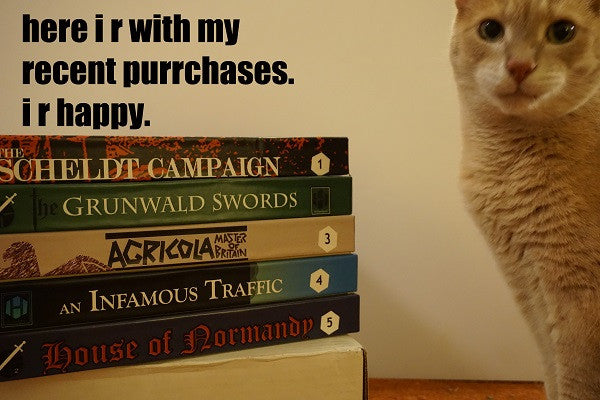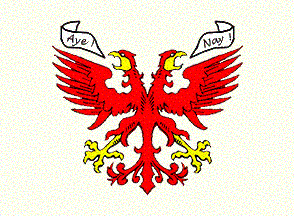Hollandazed: Thoughts, Ideas, and Miscellany
CHARLEMAGNE SESSION REPORT (by Tom Russell)

I almost won today. Like Agricola, Master of Britain, Charlemagne, Master of Europe (CMOE for short) requires that players hit a certain VP threshold to progress to the next turn. CMOE is a longer game, and there are more opportunities to score VP, and so as you'd expect the VP thresholds are higher. To win Agricola, you needed 75 VP at the end of the game. By contrast, in CMOE 75 VP is a turn threshold slightly over half-way through the game; the final threshold, at the end of Turn 12, is 135 VP. Which is doable. I know it's...
ENGAGEMENT (by Tom Russell)

Running a wargames company can be hard work. It'd be great if all you had to do was publish great games, and then folks would buy them, but of course that isn't quite that simple. Folks need to know that the game exists, and they need to know that the game is great. The million dollar question is, how do you let them know that? A lot of our time and effort is spent grappling with this question, and occasionally we'll do a bit of "opposition research": we'll poke around and see what other wargames companies are up to. I...
THE OPT-POP DIARIES, PART 5 (by Tom Russell)

So, over the last four entries in this series, I looked at some of the core ideas behind Optimates et Populares, as well as how I approached some of the design problems inherent in the topic. This time around, I'm going to look at each of the game's ten actions and how they work together. These actions are divided into three categories: Senate Actions, People of Rome Actions, and Law Actions. Restored Curia Julia, meeting house of the Roman senate Senate Actions Half of the game's Actions allow you to gain support for your ideology within the Senate. Support of...
VICTORY CONDITIONS (by Tom Russell)

Not to belabor the obvious, but Victory Conditions are what make a game a game. They constrict the game's scope and dictate its structure. Victory Conditions set goals for the players, and their strategies and tactics are generally crafted with those ends in mind. Probably the single most important thing a designer does (besides looking stunningly handsome) is decide how the game ends, and how the game is won. Sometimes these are two different things that exist somewhat independently of one another. The game might end, for example, after you've played through a certain number of Game Turns. This is...
LEAN AND BALANCE (by Tom Russell)

Wars are usually asymmetrical. One side or the other has better leaders, better or more units, more favorable terrain, more advanced equipment or doctrine. In most conflicts, one side attacks and the other defends, and in some cases, these roles may be reversed with a well-timed and well-executed counterattack or counteroffensive. Each side has its own advantages and disadvantages, and it's common for one side to have more advantages than the other, resulting in a decisive victory. It's rare for two sides to be perfectly, evenly matched. This asymmetry is, and should be, mirrored in historical wargames. One of the...
